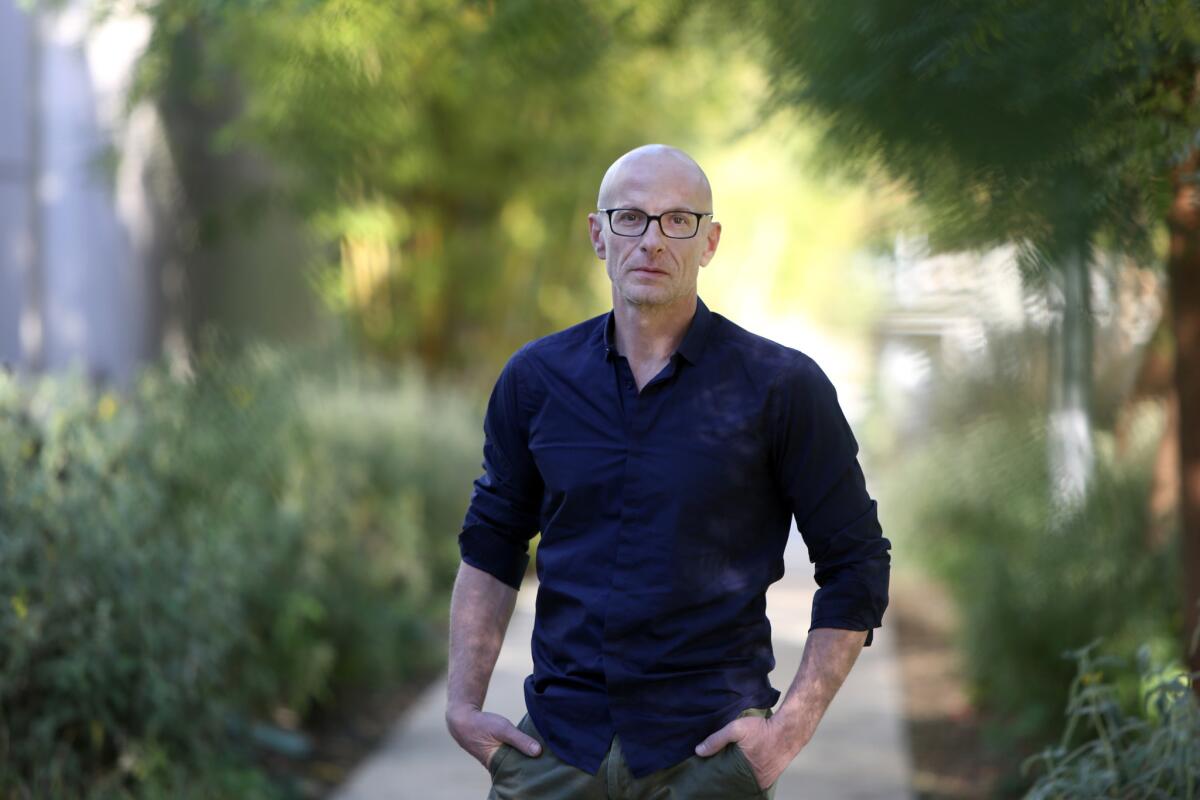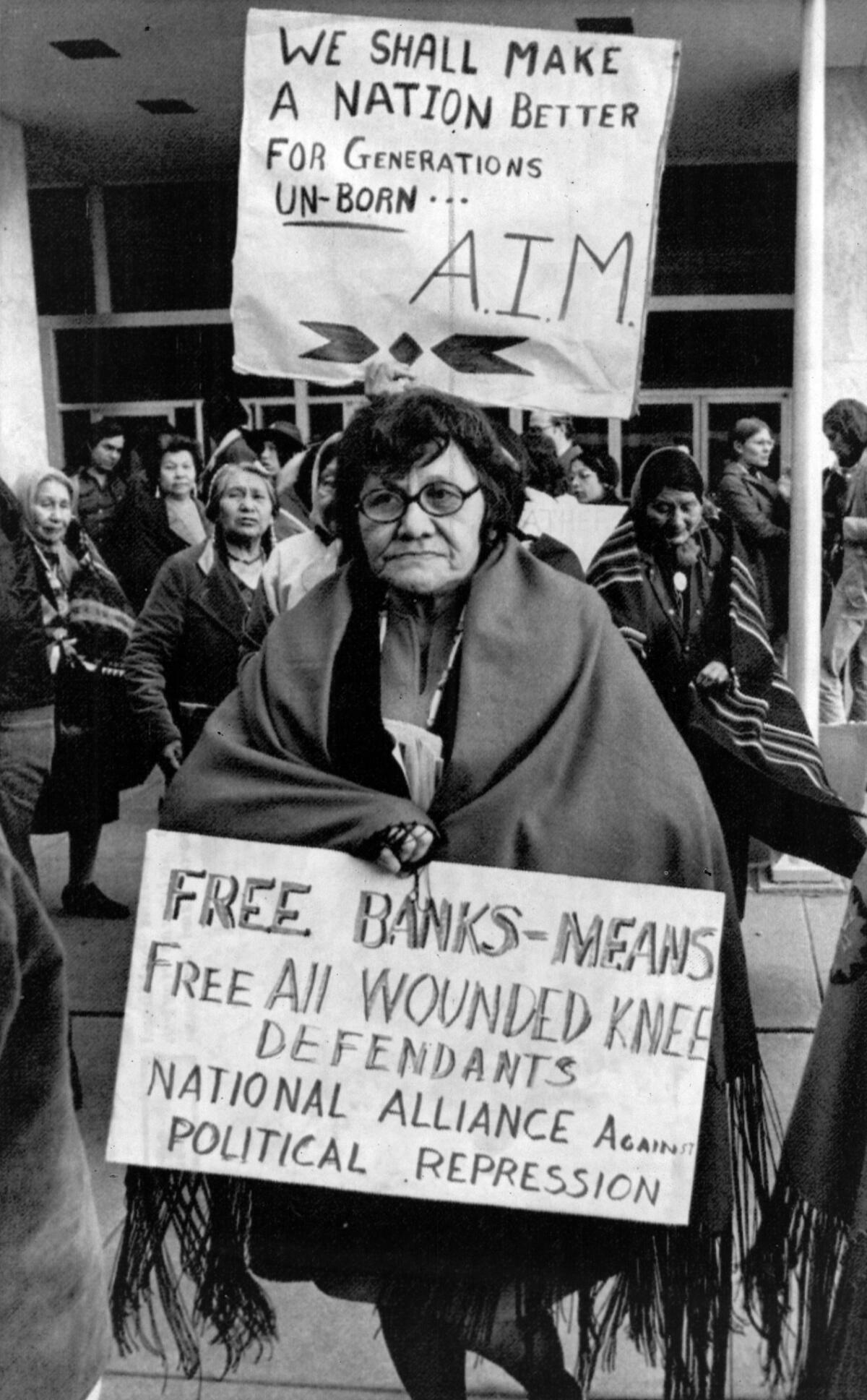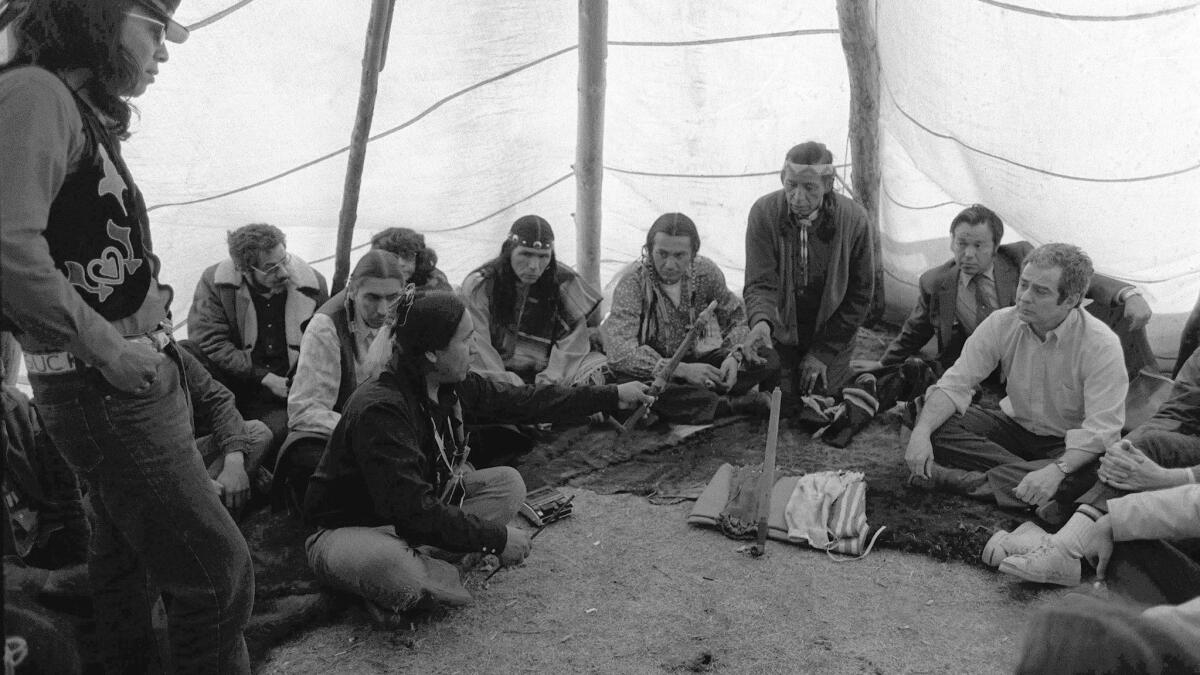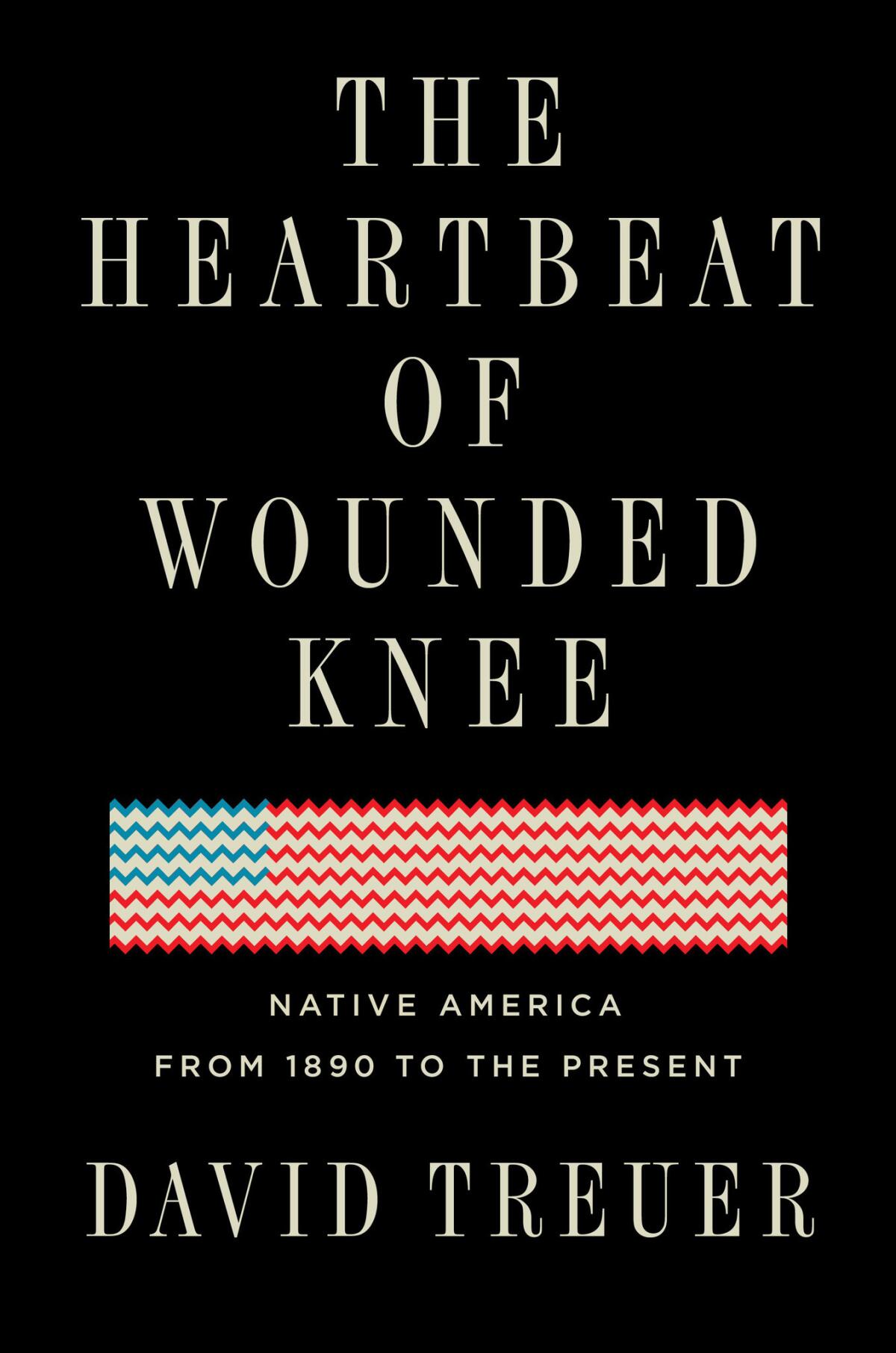Q&A: David Treuer on uncovering the untold Native American histories of ‘Heartbeat of Wounded Knee’
Every once in a while, a popular history text comes along with the power to transform social narratives by exposing readers to information previously unknown to them. Dee Brown’s blockbuster book “Bury My Heart at Wounded Knee” is a perfect example. In 1970, as the country was exploding in civil rights movements and American Indians were occupying a defunct prison on Alcatraz Island, the book stunned American audiences with a brutal history that had been often sanitized in their public school educations.
Chronicling the 1890 massacre of hundreds of Lakota people at Wounded Knee Creek in South Dakota — as well as numerous other heinous actions against American Indians — helped put things into perspective.
I was 12 when the book came out, and watching my Indian mom weep while reading the book was enough to make me never want to read it. I still have not read it, but I know what an effect it had on the American social landscape. I also know that despite that, it did what so many history texts have done previously: It confined American Indians to a tragic, disappeared past, unwittingly perpetuating a pattern of indigenous erasure from the modern American present. They tell stories of Indian death, not Indian life.
A new book, “The Heartbeat of Wounded Knee: Native America From 1890 to the Present,” explicitly counters that pattern, as the title suggests. Author David Treuer, professor of creative writing and literature at USC, an Ojibwe born and raised on the Leech Lake reservation in Minnesota, writes that “this book is a counternarrative to the story that has been told about us, but it is something more as well: it is an attempt to confront the ways we Indians ourselves understand our place in the world.”
This book is a counternarrative to the story that has been told about us
— David Treuer

This sense of collective cultural introspection generates intimate glimpses into the lives of Native people through personal stories as a way to describe the historical periods it chronicles. Journeying through the 20th and 21st century chronologically, the broad sections are organized thematically.
Part 1 provides a broad overview of pre- and post-contact Native life by region, until 1890. Subsequent sections focus less on federal policy (though that’s covered in vivid detail) than on the ways federal policy affected Native communities and individual lives.
For example, Part 2, titled “Purgatory: 1890-1934” takes up the period immediately following the massacre at Wounded Knee, in what historians often describe as the “nadir” or low point of Native life. It was a time of utter misery when community life was plagued by intractable poverty, declining health, and massive land and culture loss.
Treuer says the book is part history, part memoir and part reportage, and this combination of writing styles gives the book the feeling of creative nonfiction, which is important given the book’s hefty size at more than 500 pages.
Treuer recently spoke with me via video chat about his in-depth reportage and personal inspirations behind the book. The text is edited for clarity.
Just by our continued presence, Native people have been the way in which the country figures out what it is and what it wants to be
— David Treuer

I wanted to begin by talking about your process for interviewing people. You mention that you began writing the book after your dad passed away in 2016, which means you must have written this hefty text really quickly. You describe traveling cross-country, where you talk to all these people, but did you do also do all that traveling in that short period of time?
2014 and 2015 is when I started doing a lot of interviews and legwork, and it wasn’t just one road trip. Whenever I went anywhere, I’d find people to talk to. I went to Montana, Washington state, North Dakota and Minnesota a lot. And whenever I met with someone — and this is not standard journalistic protocol — I’d tell them, “I’m writing a book and I want to talk you about your life,” and would later go back and revisit their stories with them. But as I’m sure you know, because we [Native people] have so often been co-opted, misconstrued, talked-over and imagined to within an inch of our lives by outsiders — and had so little control over our own stories — I gave people the opportunity to revise what they had told me before, or opt-out completely if they wanted to. If I’m going to write a book about us and for us, it has to serve us.

That’s really generous, and it’s really an indigenous methodology.
Maybe, but it just felt right. We’ve been screwed over so many times, and I didn’t want to screw anyone over. But it was really encouraging. Like one guy, a Blackfeet nicknamed Red Boy: I say some things that are an assessment of what he’s like in his character, and describe him as being very sad, and I was really nervous; what’s he gonna think? It’s really uncomfortable to be written about and see someone else’s assessment of you.
Especially if it’s not how you think of yourself.
Exactly, and we almost never think about ourselves the way others think of us. I was talking with a friend who said, “Wait, if he [Red Boy] says he doesn’t like it and wants to pull out, it could jeopardize the whole chapter.” But he read it and thought I did a great job, and basically said, “Go with God.”
You’ve used these stories as a vehicle to bring this history to life, to give it focus, how these histories have played out in people’s lives. What were the challenges of writing history this way?
I don’t know what the challenges were because I don’t know any other way to do it. But what I discovered, like when writing “Rez Life” [Treuer’s previous book, released in 2012], is that policy is not just a presidential declaration, or an act of Congress, or dry “catalogable” acts.

History is something that lives inside of us. Federal Indian policy of the 1950s was experienced in very personal ways. I don’t know any other way to tell Indian history than through Indian voices. This is a history of Indian lives, not Indian deaths. It’s about how we continue to live and move forward. How we’re both Native and American, and how we square the tribal circle with the American republic.
One of the things that struck me was the title of the third chapter, “Fighting Life: 1918-1945,” where violence is centered as a force that mediates Native lives — violence done to us, to each other and to ourselves — and not necessarily physical violence, but fighting as a force that drives us to continue to adapt and survive in the modern world. And also trauma. How do you think trauma shapes our lives?
My views are mixed. We hear a lot about historical trauma and blood memory, but I don’t subscribe completely to that view. If you think about the bubonic plague in 14th century Europe where everyone was dying, where everyone lost parents and children; we don’t hear about historic trauma associated with it.
That was pretty far in the past …
So was Columbus, but people still talk of that as historical trauma. Why do we talk about trauma associated with one but not the other? I also think about my father, as a Holocaust survivor. He experienced so much more trauma than I can even imagine, losing his entire family, losing his homeland, his language and culture, fleeing for his life. I haven’t experienced anything quite that severe. But he was an excellent role model and father, even though he had many flaws. He was marked by trauma, but it did not determine the shape of his life. Obviously, we live out the effects of the past. The problem is not that Native people were enslaved after Columbus — although that’s a problem — or that various colonial powers tried to destroy us, or that we were written out of the Constitution. It’s that the ways historical injustices have been perpetuated into the present moment activates a kind of trauma in a way that keeps it alive.

You write about the more recent history of the Red Power Movement and question the popular presumption of [Native American activist] Leonard Peltier’s innocence and wrongful imprisonment. Are you concerned about pushback from Indian country about that?
I imagine there will be some pushback. But in my reporting on Peltier I just rely on the verified record. It feels very important not to ignore the ways in which Peltier and the some of the American Indian Movement’s leadership has been found wanting and has failed. There have been a couple of generations now of hero worship of people like Russell Means and Dennis Banks and not a recognition of the kind of violence that dogged the movement, and sometimes perpetrated by leaders of the movement.
Although Native women are writing about it.
Exactly, and as always Native women are taking the lead in all the important things. And at great risk have gone on the record to talk about what they experienced at Wounded Knee and in [the American Indian Movement] more generally. The people I write about, at least in relation to AIM, may not feel what I feel to be true, which is that I hold us, our tribes, our leaders, with too much respect to not ask of them their best. I hold the elected officials of the United States government to a very high standard, but I hold our [tribal] elected officials to a higher standard. That’s why I think the protest at Standing Rock is a great example of a movement that was also troubled by some of the actions of elected Standing Rock officials — that’s a matter of record. But it was a movement that was powerful because water protectors also held each other to a very high standard of behavior, and dignity and accountability. Unlike AIM, the water protectors empowered women as opposed to the ways AIM disempowered women. And empowered the collective, rather than figureheads, and built coalitions, rather than to lead a following. Russell Means and Dennis Banks’ legacy may be dinged by my book, but I’m less concerned with their legacies than I am about the continued health, power and effectiveness of Indian movements and Indian communities.

I get the sense that you believe the U.S. is capable of transcending its history and doing right by us.
I wouldn’t say that as it exists now the American system is capable of protecting and defending even most Americans as much as it is capable and designed to protect commercial interests and multinational corporations. That said, our founding documents and stated ideals are worth defending and can be revived, particularly for the most vulnerable. I feel there is a war for the character of the country that is underway. We see it in electoral politics and the two-party schism we’ve inherited and that we’ve made. That war is between two competing versions of America, a country that creates equal opportunities and protections, and one that simply promotes, in the words of Ronald Reagan, a place where someone can still get rich. We have always been at the center of that fight. Just by our continued presence, Native people have been the way in which the country figures out what it is and what it wants to be.
::
David Treuer
Riverhead; 528 pp., $28
Gilio-Whitaker (Colville Confederated Tribes) is a writer and educator in indigenous studies. Her book “As Long as Grass Grows: The Indigenous Fight for Environmental Justice From Colonization to Standing Rock," will be released from Beacon Press April 2.
Sign up for our Book Club newsletter
Get the latest news, events and more from the Los Angeles Times Book Club, and help us get L.A. reading and talking.
You may occasionally receive promotional content from the Los Angeles Times.



